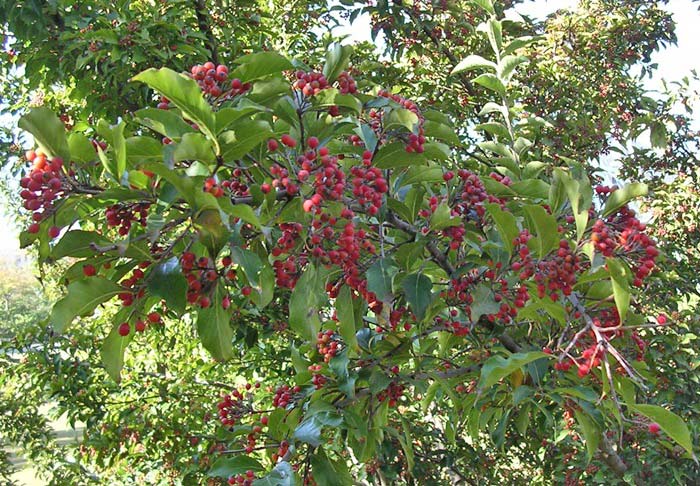Photinia lucida
The Taiwan photinia is a deciduous small tree or shrub primarily found in low-altitude deciduous broadleaved forests across Taiwan at elevations below 1,500 meters. It blooms around late spring to early summer, with the entire plant adorned in lush white flowers resembling a snow-covered landscape, creating a striking visual impact. It serves as an important nectar source, contributing to the maintenance of insect community diversity. When the fruits mature, they turn a vibrant red, with a rich color that holds strong visual appeal, attracting various bird species to feed on them. It is regarded as an excellent bird attractant. After birds consume the fruits, they aid in seed dispersal, playing a positive role in maintaining the dynamic balance of forest ecosystems. Due to these characteristics, it possesses both ecological value and ornamental potential.
The deciduous period for the Taiwan photinia primarily occurs during winter. As temperatures drop and daylight hours shorten, the leaves gradually wither and fall off. With the changing seasons, the leaves transition from green to yellow, red, orange, or brown before falling, showcasing a rich array of colors and making them exceptionally beautiful deciduous plants.
The Taiwan photinia is highly adaptable and offers attractive flowers, fruits, and leaves, providing a variety of seasonal visual effects. They can be used as garden trees and hedge plants. The Taiwan photinia was originally planted around the circular hill in the Central Lowland Area of the Botanical Garden as a representative plant of lowland deciduous forests. However, due to birds feeding on the fruits and naturally dispersing the seeds, saplings from natural seed dispersal can now be seen throughout the entire garden, with a particularly high concentration along both sides of the trails in the Northern Lowland Area.

